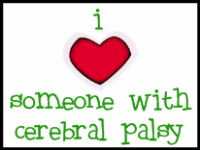Welcome to Friday Facts! here on the Knowledge Safari blog. Each week we aim to shine the spotlight on various segments of special needs in order to raise awareness and provide information. Today we focus on Cockayne Syndrome.
The following is taken from and more information can be found at: Share and Care the Cockayne Syndrome Network
What is Cockayne Syndrome?
Cockayne Syndrome (CS) is a rare genetic disorder characterized by poor growth, microcephaly, progeria (premature aging), sensitivity to sunlight, moderate to profound developmental and neurological delays, and a shortened lifespan. CS is inherited in an autosomal recessive pattern. In order for a child to be affected by CS, he or she must inherit a mutation (-) in the same CS gene from both parents. The parents and other “carriers” of a single CS gene mutation remain healthy. Once a couple are known to carriers, they have a 1 in 4 (25%) chance of having another child with CS
The symptoms of Cockayne syndrome vary significantly, especially with regard to their age of onset and rate of progression. The resulting spectrum of severity can be imperfectly divided into three “types” of CS:
CS type I is characterized by normal prenatal growth with the onset of growth and developmental abnormalities around one year of age. The typical lifespan is ten to twenty years of age.
CS type II is characterized by growth failure and other abnormalities at birth, with little or no postnatal neurologic development. The typical lifespan is up to seven years.
CS type III is characterized by a later onset, lesser symptoms, and/or a slower rate of progression.. The expected lifespan is unclear, but can extent to forty or fifty years of age.
Some individuals have combined features of Cockayne syndrome and Xeroderma Pigmentosum, which is characterized by a wide range of skin changes, from mild freckling to skin cancer on areas exposed to sunlight.
What Genes are Related to CS?
Mutations in the ERCC6 (CSB) or ERCC8 (CSA) genes cause Cockayne syndrome. The ERCC6 and ERCC8 genes provide instructions for making two proteins, called CSB and CSA, which are involved in repairing DNA. If either gene is altered, DNA damage is not as rapidly repaired. As a result, damaged DNA accumulates, which probably leads to impaired cell functions and eventually, cell death. Increased cell death likely contributes to features of Cockayne syndrome such as growth failure and premature aging.
Research and genetic testing for CS is being conducted by Dr. Edward G. Neilan, M.D., Ph.D., Staff Physician, Division of Genetics, Children’s Hospital Boston. Email edward.neilan@childrens.harvard.edu or phone (617) 919-2671.
Treatment and Management of CS
No specific treatment currently exists for CS. Patients should be treated according to the symptoms they have. Physical, occupational, speech, vision, and hearing therapy are most often beneficial.
CS Characteristics and Diagnosis
The following is a list of the most common characteristics noted in reported cases of CS. No child will necessarily have all the characteristics listed, and some of these findings are progressive.
• Social, jovial personalities
• Sunburns easily
• Progeria (premature aging)
• Shortened life span
• Microcephaly
• Neurodevelopment delay
• Short stature (height <5th percentile)
• Contractures
• Unsteady gait
• Spasticity
• Rounded back
• Deep set eyes, small slender straight nose
• Dental caries (cavities)
• Retinopathy and/or cataracts
• Hearing loss
• Poor circulation (cold hands and feet
• Low body temperature
• Mircopenis
• Feeding problems
• Sleeping with eyes open
• Tremors
• White matter abnormalities
• Basal ganglia calcifications
• Liver abnormalities; elevated liver enzymes
• Hypertension
• Severe itchiness
Cockayne syndrome is diagnosed by clinical findings including postnatal growth failure and progressive neurologic dysfunction along with other characteristics. Diagnosis should include molecular genetic testing. Contact Dr. Edward Neilan for more information.
Hello Again
5 weeks ago































No comments:
Post a Comment